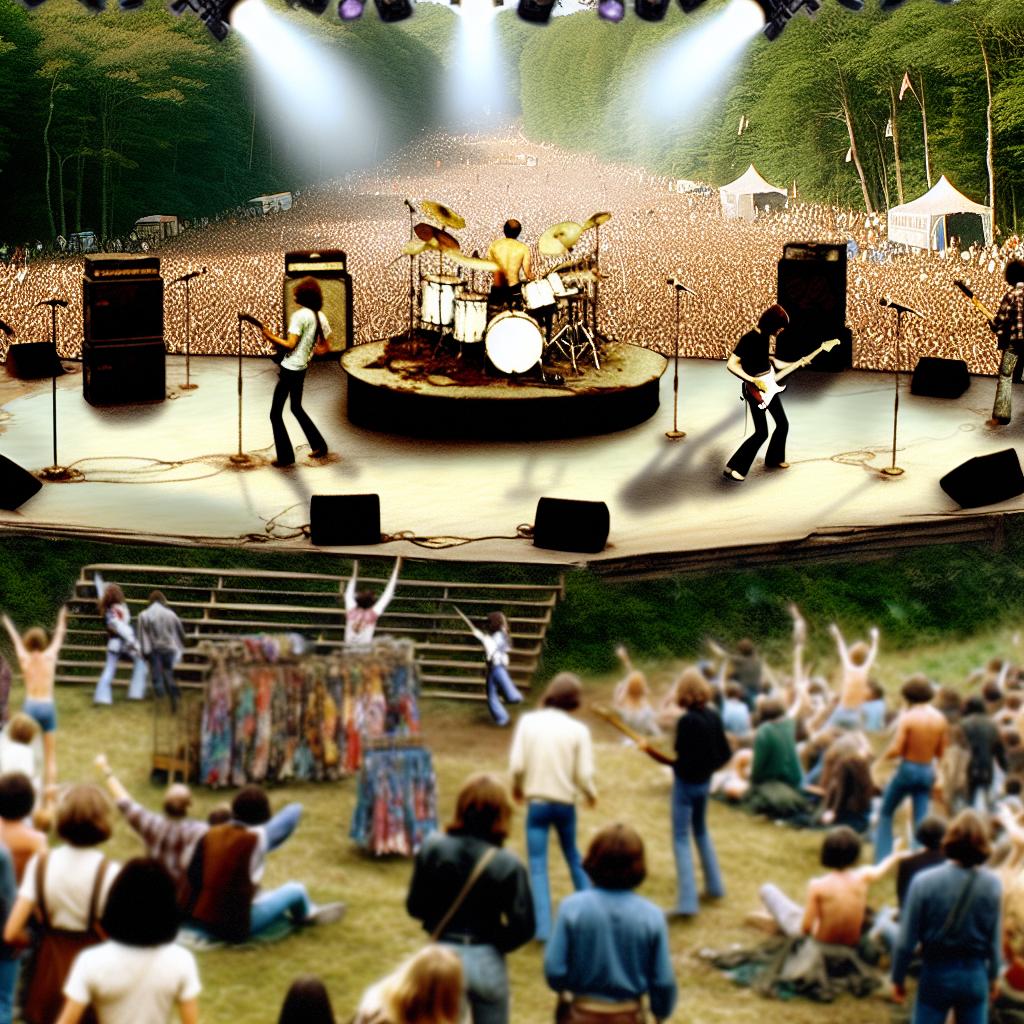Overview of The Who’s Performance at Woodstock 1969
In 1969, the Woodstock Music and Art Fair became a pivotal moment in music history, both as a cultural landmark and as a showcase for some of the most significant artists of the time. Among these, The Who delivered a performance that not only captured the spirit of the era but also solidified their reputation as one of the leading rock bands. Their performance remains memorable for its intensity, skill, and crowd engagement.
The Setlist and Performance
The Who took the stage in the early hours of August 17, 1969. Their setlist included many of their greatest hits, like “I Can’t Explain,” “Pinball Wizard,” and “My Generation.” One of the most notable highlights of their performance was their rock opera, “Tommy.” They played a substantial portion of this groundbreaking work, captivating the audience with their innovative blend of rock and narrative. Each song was carefully selected to not only showcase the band’s musical expertise but also to maintain a high level of engagement with the audience, which had already been energized from the festival’s earlier performances.
“I Can’t Explain,” one of the earlier hits by The Who, was met with great enthusiasm, setting the tone for the night with its catchy riffs and relatable lyrics. “Pinball Wizard,” another standout track, showcased Pete Townshend’s masterful guitar work and Roger Daltrey’s powerful vocals. As they played “My Generation,” the anthem that has become synonymous with youthful angst and rebellion, the crowd responded with fervor, singing along with every word.
The performance of “Tommy,” however, was where the band truly excelled. This rock opera, which tells the story of a “deaf, dumb, and blind” boy, was a testament to their creativity and ability to weave storytelling with rock music. The band’s ability to perform such a complex piece live, with all its intricacies, was nothing short of astounding.
Technical Challenges
The Woodstock festival faced numerous logistical challenges, primarily due to weather conditions and the overwhelming number of attendees. The Who’s set was delayed as a result of these unforeseen issues. Power fluctuations threatened to overshadow their dynamic performance and posed a potential hindrance, but the band’s professionalism and determination ensured that the show went on without sacrificing quality.
One particularly memorable technical mishap occurred when an unexpected power outage silenced the amplifiers mid-performance. The band’s quick recovery, coupled with the cheering crowd, transformed what could have been a setback into a moment of communal participation—a testament to live performance’s unpredictable nature. Their ability to adapt and continue their concert, despite these hurdles, highlighted their dedication and resilience, contributing to the legendary status of their appearance.
Political and Social Context
To fully appreciate The Who’s Woodstock performance, it is important to consider the larger political and social context in which it occurred. The 1960s were a decade characterized by significant social upheaval, including the civil rights movement, anti-Vietnam War protests, and a rapidly transforming cultural landscape. The Who’s music, known for its themes of rebellion and change, reverberated with the audience, which was largely composed of a younger generation keen on challenging the status quo.
Their performance at Woodstock was not merely a musical event; it was also an integral part of the ongoing dialogue about societal changes. The festival itself was a manifestation of the countercultural movement’s ideals—peace, love, and music as a means for political expression. As The Who played, their music became a vehicle for conveying messages of defiance, solidarity, and a desire for change. This connection between the music and the socio-political climate of the time was palpable and contributed to the depth and reception of their show.
Legacy of The Who at Woodstock
The impact of The Who’s Woodstock performance continues to resonate through the decades. It has been preserved in recordings and documentaries, which have allowed new generations to experience the energy and significance of that iconic show. The concert is frequently analyzed and celebrated for both its artistic merit and for representing the era’s spirit so dramatically.
The legacy extends beyond the confines of that specific performance date. For The Who, it bolstered their international reputation and solidified their place in rock history. In many ways, Woodstock served as a launchpad for the band’s continued success throughout the 1970s and beyond. For fans and music historians alike, that performance exemplifies the raw energy and unfiltered expression that The Who brought to their music and live shows, encapsulating the essence of an era fueled by passion and change.
Furthermore, the Woodstock performance served to elevate The Who’s rock opera “Tommy” into a cultural phenomenon. The album gained increased attention and acclaim, and its integration into the Woodstock performance showcased the potential for rock music to achieve high levels of artistic expression, challenging preconceived notions of what popular music could accomplish.
The band’s willingness to push boundaries and embrace both the simplicity and complexity of rock music left a lasting impression not only on those in attendance but also on future musicians who looked to The Who as pioneers. In essence, The Who’s contribution to Woodstock exemplified how music could transcend mere entertainment, becoming a powerful medium for influence and change.
Thus, the legacy of The Who at Woodstock is multi-faceted—it does not only celebrate a specific moment in rock history but also reminds us of the enduring power of music as a force for personal and cultural expression. For a deeper understanding of The Who and their continued influence in the music world, further exploration can be found through various dedicated articles and retrospectives found on channels like the Rock & Roll Hall of Fame.
